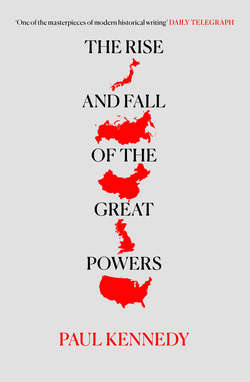Читать книгу The Rise and Fall of the Great Powers - Paul Kennedy - Страница 11
1 The Rise of the Western World
ОглавлениеIn the year 1500, the date chosen by numerous scholars to mark the divide between modern and premodern times,1 it was by no means obvious to the inhabitants of Europe that their continent was poised to dominate much of the rest of the earth. The knowledge which contemporaries possessed about the great civilizations of the Orient was fragmentary and all too often erroneous, based as it was upon travellers’ tales which had lost nothing in their retelling. Nevertheless, the widely held image of extensive eastern empires possessing fabulous wealth and vast armies was a reasonably accurate one, and on first acquaintance those societies must have seemed far more favourably endowed than the peoples and states of western Europe. Indeed, placed alongside these other great centres of cultural and economic activity, Europe’s relative weaknesses were more apparent than its strengths. It was, for a start, neither the most fertile nor the most populous area in the world; India and China took pride of place in each respect. Geopolitically, the ‘continent’ of Europe was an awkward shape, bounded by ice and water to the north and west, being open to frequent landward invasion from the east, and vulnerable to strategic circumvention in the south. In 1500, and for a long time before and after that, these were not abstract considerations. It was only eight years earlier that Granada, the last Muslim region of Spain, had succumbed to the armies of Ferdinand and Isabella; but that signified the end of a regional campaign, not of the far larger struggle between Christendom and the forces of the Prophet. Over much of the western world there still hung the shock of the fall of Constantinople in 1453, an event which seemed the more pregnant because it by no means marked the limits of the Ottoman Turks’ advance. By the end of the century they had taken Greece and the Ionian islands, Bosnia, Albania, and much of the rest of the Balkans; and worse was to come in the 1520s when their formidable janissary armies pressed toward Budapest and Vienna. In the south, where Ottoman galleys raided Italian ports, the popes were coming to fear that Rome’s fate would soon match that of Constantinople.2
Whereas these threats seemed part of a coherent grand strategy directed by Sultan Mehmet II and his successors, the response of the Europeans was disjointed and sporadic. Unlike the Ottoman and Chinese empires, unlike the rule which the Moguls were soon to establish in India, there never was a united Europe in which all parts acknowledged one secular or religious leader. Instead, Europe was a hodge-podge of petty kingdoms and principalities, marcher lordships and city-states. Some more powerful monarchies were arising in the west, notably Spain, France, and England, but none was to be free of internal tensions and all regarded the others as rivals, rather than allies in the struggle against Islam.
Nor could it be said that Europe had pronounced advantages in the realms of culture, mathematics, engineering, or navigational and other technologies when compared with the great civilizations of Asia. A considerable part of the European cultural and scientific heritage was, in any case, ‘borrowed’ from Islam, just as Muslim societies had borrowed for centuries from China through the media of mutual trade, conquest, and settlement. In retrospect, one can see that Europe was accelerating both commercially and technologically by the late fifteenth century; but perhaps the fairest general comment would be that each of the great centres of world civilization about that time was at a roughly similar stage of development, some more advanced in one area, but less so in others. Technologically and, therefore, militarily, the Ottoman Empire, China under the Ming dynasty, a little later northern India under the Moguls, and the European states system with its Muscovite offshoot were all far superior to the scattered societies of Africa, America, and Oceania. While this does imply that Europe in 1500 was one of the most important cultural power centres, it was not at all obvious that it would one day emerge at the very top. Before investigating the causes of its rise, therefore, it is necessary to examine the strengths and the weaknesses of the other contenders.
